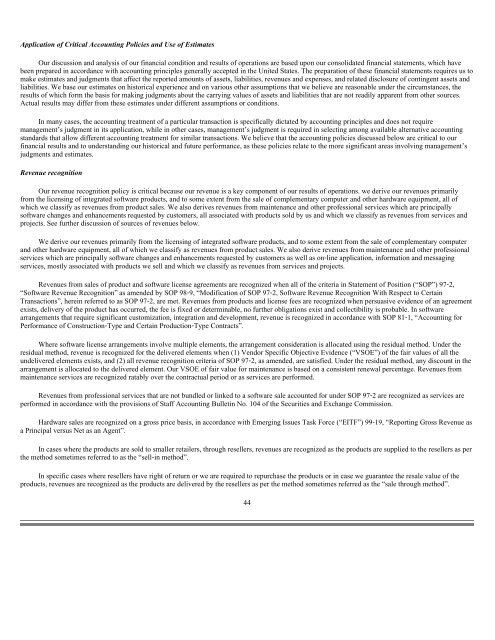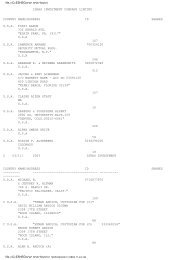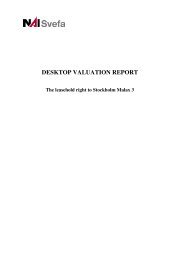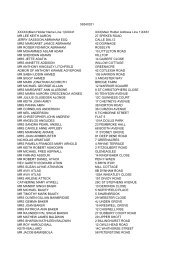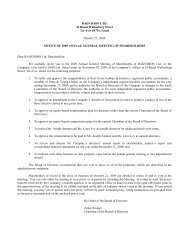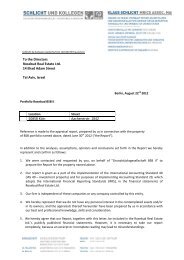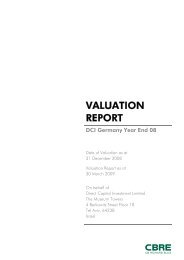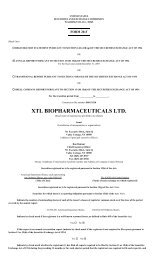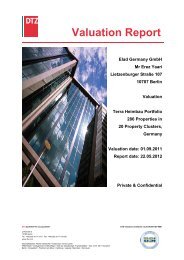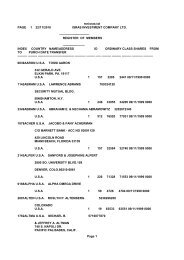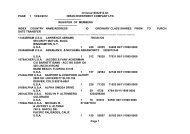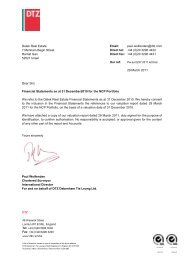RETALIX LTD.
RETALIX LTD.
RETALIX LTD.
You also want an ePaper? Increase the reach of your titles
YUMPU automatically turns print PDFs into web optimized ePapers that Google loves.
Application of Critical Accounting Policies and Use of Estimates<br />
Our discussion and analysis of our financial condition and results of operations are based upon our consolidated financial statements, which have<br />
been prepared in accordance with accounting principles generally accepted in the United States. The preparation of these financial statements requires us to<br />
make estimates and judgments that affect the reported amounts of assets, liabilities, revenues and expenses, and related disclosure of contingent assets and<br />
liabilities. We base our estimates on historical experience and on various other assumptions that we believe are reasonable under the circumstances, the<br />
results of which form the basis for making judgments about the carrying values of assets and liabilities that are not readily apparent from other sources.<br />
Actual results may differ from these estimates under different assumptions or conditions.<br />
In many cases, the accounting treatment of a particular transaction is specifically dictated by accounting principles and does not require<br />
management’s judgment in its application, while in other cases, management’s judgment is required in selecting among available alternative accounting<br />
standards that allow different accounting treatment for similar transactions. We believe that the accounting policies discussed below are critical to our<br />
financial results and to understanding our historical and future performance, as these policies relate to the more significant areas involving management’s<br />
judgments and estimates.<br />
Revenue recognition<br />
Our revenue recognition policy is critical because our revenue is a key component of our results of operations. we derive our revenues primarily<br />
from the licensing of integrated software products, and to some extent from the sale of complementary computer and other hardware equipment, all of<br />
which we classify as revenues from product sales. We also derives revenues from maintenance and other professional services which are principally<br />
software changes and enhancements requested by customers, all associated with products sold by us and which we classify as revenues from services and<br />
projects. See further discussion of sources of revenues below.<br />
We derive our revenues primarily from the licensing of integrated software products, and to some extent from the sale of complementary computer<br />
and other hardware equipment, all of which we classify as revenues from product sales. We also derive revenues from maintenance and other professional<br />
services which are principally software changes and enhancements requested by customers as well as on-line application, information and messaging<br />
services, mostly associated with products we sell and which we classify as revenues from services and projects.<br />
Revenues from sales of product and software license agreements are recognized when all of the criteria in Statement of Position (“SOP”) 97-2,<br />
“Software Revenue Recognition” as amended by SOP 98-9, “Modification of SOP 97-2, Software Revenue Recognition With Respect to Certain<br />
Transactions”, herein referred to as SOP 97-2, are met. Revenues from products and license fees are recognized when persuasive evidence of an agreement<br />
exists, delivery of the product has occurred, the fee is fixed or determinable, no further obligations exist and collectibility is probable. In software<br />
arrangements that require significant customization, integration and development, revenue is recognized in accordance with SOP 81-1, “Accounting for<br />
Performance of Construction-Type and Certain Production-Type Contracts”.<br />
Where software license arrangements involve multiple elements, the arrangement consideration is allocated using the residual method. Under the<br />
residual method, revenue is recognized for the delivered elements when (1) Vendor Specific Objective Evidence (“VSOE”) of the fair values of all the<br />
undelivered elements exists, and (2) all revenue recognition criteria of SOP 97-2, as amended, are satisfied. Under the residual method, any discount in the<br />
arrangement is allocated to the delivered element. Our VSOE of fair value for maintenance is based on a consistent renewal percentage. Revenues from<br />
maintenance services are recognized ratably over the contractual period or as services are performed.<br />
Revenues from professional services that are not bundled or linked to a software sale accounted for under SOP 97-2 are recognized as services are<br />
performed in accordance with the provisions of Staff Accounting Bulletin No. 104 of the Securities and Exchange Commission.<br />
Hardware sales are recognized on a gross price basis, in accordance with Emerging Issues Task Force (“EITF”) 99-19, “Reporting Gross Revenue as<br />
a Principal versus Net as an Agent”.<br />
In cases where the products are sold to smaller retailers, through resellers, revenues are recognized as the products are supplied to the resellers as per<br />
the method sometimes referred to as the “sell-in method”.<br />
In specific cases where resellers have right of return or we are required to repurchase the products or in case we guarantee the resale value of the<br />
products, revenues are recognized as the products are delivered by the resellers as per the method sometimes referred as the “sale through method”.<br />
44


